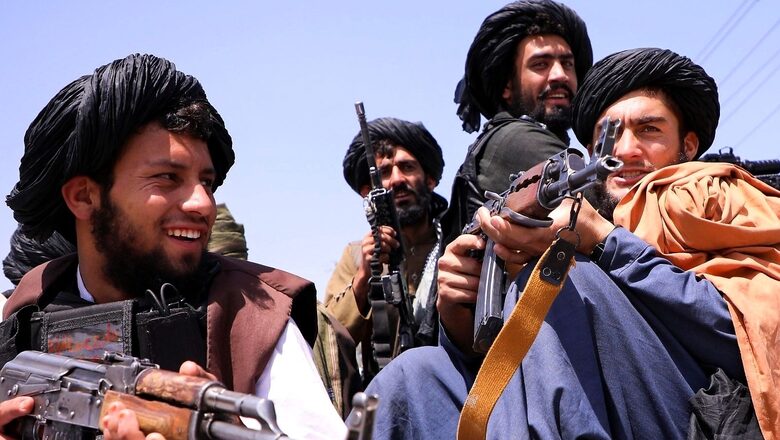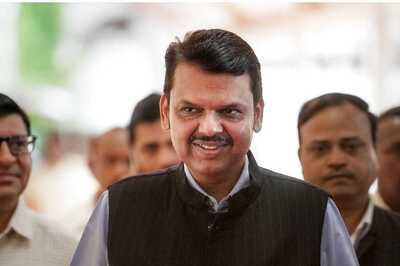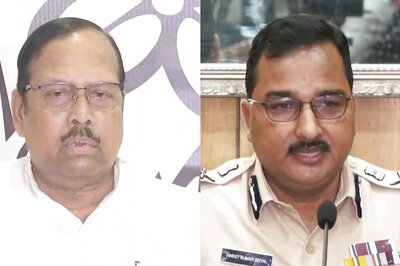
views
When the Twin Towers came down in New York on September 11, 2001 (9/11), it was the manifestation of a high-mark in the campaign that radical Islamists had undertaken to wreak revenge for what they perceived as the wrongs done to their faith by ‘others’. Colonial powers and western democracies were some one of the ‘others’ among the many non-Muslim states and people. The Global War on Terrorism (GWOT) was launched by the US immediately in the wake of 9/11, recognizing the threat that Political Islam held out against the world.
The worldwide terror campaign by radical Islamist organizations was dynamic in intensity and peaked in different parts of the world at different times. In India, it was at a high well before the first decade of the 2000s. Renewed efforts at embroiling Europe, Africa and the US came in the wake of the rise of the Islamic State (IS) in the Middle East and the continuous turbulence created by the wars in Afghanistan, Iraq and Syria. By 2018-19, terror as a non-state weapon appeared to have taken a step back with the defeat of ISIS, the inability of Al Qaeda to rise and be counted after Osama bin Laden’s death, and the recent fall in the number of terror incidents in traditional hotspots. Even areas like Jammu & Kashmir (J&K), where proxy terror was rife some years ago, entered a relatively peaceful phase in 2019. South East Asia, which saw large-scale terror movements in Indonesia and the Philippines in particular, also saw a waning of the same. Afghanistan remained a hotspot with the Taliban biding its time, retaining stamina and awaited the big decision of withdrawal by the US.
The recent run of events in Afghanistan and no proven evidence of change of style or mission from what the Taliban followed in yesteryears could see resurgence of Islamic radical elements dictating the future course of international events with a revived global campaign against the ‘others’. The gravitation of a plethora of Islamist terror groups towards Afghanistan to muscle their individual space seems to suggest a newfound energy and reactivation of the global Islamist campaign.
A short analysis of the origins of the war of the Islamists against the ‘others’ will be helpful in establishing this.
ALSO READ | 20 Years after 9/11, US Stature as Unchallenged Global Power Has Diminished
How Taliban Came into Being
The grudge that Islamists hold goes back to the colonial era. Two regions stood out in the development of ideologies, which adhered to the Islamic revival—the Indian subcontinent and the Middle East. The defeat of the Ottomans and dismantling of the Caliphate eventually led to revivalism through the rise of the Muslim Brotherhood in Egypt/Middle East and the Jamaat-e-Islami in the Indian subcontinent. The thrust to this revivalism was provided by the creation of Israel in the Middle East in 1948 and Pakistan in the Indian subcontinent in 1947. The Arab-Israeli and India-Pakistan conflicts provided the adrenaline at frequent intervals to the fight of Islamism against the ‘other’. All this converged in 1979 when the Iranian Revolution sent signals of a potential Shia surge.
Then came the Soviet invasion of Afghanistan the same year, bringing the US, Saudi Arabia and Pakistan together in a hybrid war employing transnational mercenaries, the Islamic Mujahideen. It all fitted the grand strategy of Pakistan, which after its comprehensive defeat to India in 1971 was seeking ways of retribution against its nemesis. As it became the frontline state for the battle against the Soviets, money and weaponry pouring in at will, it also became the core nation for Islamic revivalism. The latter was a part of the strategy of the revivalist Sunni Islamic forces centred in Saudi Arabia and Pakistan; for the Saudis to prevent the rise of Shia Iran, and for Pakistan to subjugate the Sufi ideology and order, which held sway over much of the Indian subcontinent.
As part of its progressive strategy, Pakistan exploited the presence of three million Afghan refugees on its soil to brainwash large segments of Afghan youth towards revivalist Sunni Islamic ideology. This ideology, obscurantist in content, essentially looked at Caliphate and Islamic domination of the world. The Taliban was born in this process, which started out from the Afghan refugee camps and its progressive rise became history even as it seized power in Afghanistan in 1996 and hosted elements that had a grudge against all the ‘others’.
For the Saudis, the eastern flank of Iran now adhered to its obscurantist Sunni Islamic ideology. For Pakistan, the Taliban presence gave it strategic depth against India and a secure border in the west gave it opportunity to focus on the east in J&K. The line of obscurantist Islamist ideology extended from the Middle East to Afghanistan and Pakistan and thence into J&K where Sufi mosques changed hands without realization by the Indian security establishment. It was a cultural invasion of sorts.
ALSO READ | The Strategic Disconnect between India and US Has Been Revealed by Afghanistan
No Freedom from Global Terror
The Taliban’s rise in 1996 gave opportunity to non-state forces in a progressively rising campaign of terror, which extended to the West, South East Asia, Middle East and South Asia. Not everywhere an immediate manifestation of terror was seen but the capability for that was well-established; the garnering of finances from the worldwide narcotics trade and the sale of arms and other munitions.
The 9/11 terror attacks executed by the Al Qaeda brought about an international awakening, led by the US. Without that perhaps a global campaign would never have been launched against the forces of Islamic revivalism. However, the actions by the West against the Taliban and elsewhere brought about a closing in of ranks within much of the Islamic communities and a dynamic rise and fall of disparate terrorist groups, culminating with the eventual defeat of the Islamic State around 2018-19. In the two or three year hiatus from international terror, perceptions were built around a possible end to global terror. However, the chaotic withdrawal of the US from Afghanistan and return of the Taliban to power have reignited Islamist elements. Is a return to global terror therefore inevitable?
Interestingly, this time Saudi Arabia, which earlier supported Taliban 1.0, has taken a back seat, confident of its hold over Islam through the presence of the most-important Islamic shrines within its geographic frontiers. Erdogan’s Turkey has attempted to assume greater importance. Pakistan remains the prime sponsor of Taliban 2.0, which may not appear to have the administrative capability to run a nation beset with non-state forces seeking their space.
Afghanistan’s territorial space is likely to once again emerge as the core centre of terrorist forces with reluctance of all powers to seek any form of physical intervention. In many ways, this would demand that the Taliban 2.0 be actually assisted to prevent Afghan territory being misused. How will this manifest, if at all, is what the world will anxiously await. Islamist revivalism is likely to be inspired by the mismanagement of the US withdrawal and its potential reluctance to ever return for physical intervention. It is not as if we may see a sudden rise in terror incidents but with infused confidence these elements would look towards a flagship act and revival of flagging networks, which will signal their return. J&K is one of those areas which hold potential for some such act in the near future.
On the 20th anniversary of 9/11, the world does not appear any freer from global terror than what it was before the event. The churn within Islam is unlikely to find any unified effort by Islamic nations to focus energy towards peaceful co-existence. In fact, the struggle for leadership itself is likely to point the trends in the opposite direction.
The writer is a former GOC of the Srinagar-based 15 Corps and Chancellor Central University of Kashmir. The views expressed in this article are those of the author and do not represent the stand of this publication.
Read all minute-by-minute news updates for Uttar Pradesh election results 2022, Punjab election results 2022, Uttarakhand election results 2022, Manipur election results 2022, and Goa election results 2022.
Click here for seat-wise LIVE result updates.



















Comments
0 comment